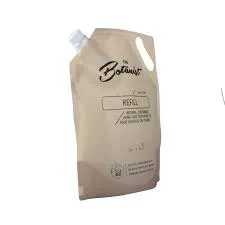- Afrikaans
- Albanian
- Amharic
- Arabic
- Armenian
- Azerbaijani
- Basque
- Belarusian
- Bengali
- Bosnian
- Bulgarian
- Catalan
- Cebuano
- chinese_simplified
- chinese_traditional
- Corsican
- Croatian
- Czech
- Danish
- Dutch
- English
- Esperanto
- Estonian
- Finnish
- French
- Frisian
- Galician
- Georgian
- German
- Greek
- Gujarati
- haitian_creole
- hausa
- hawaiian
- Hebrew
- Hindi
- Miao
- Hungarian
- Icelandic
- igbo
- Indonesian
- irish
- Italian
- Japanese
- Javanese
- Kannada
- kazakh
- Khmer
- Rwandese
- Korean
- Kurdish
- Kyrgyz
- Lao
- Latin
- Latvian
- Lithuanian
- Luxembourgish
- Macedonian
- Malgashi
- Malay
- Malayalam
- Maltese
- Maori
- Marathi
- Mongolian
- Myanmar
- Nepali
- Norwegian
- Norwegian
- Occitan
- Pashto
- Persian
- Polish
- Portuguese
- Punjabi
- Romanian
- Russian
- Samoan
- scottish-gaelic
- Serbian
- Sesotho
- Shona
- Sindhi
- Sinhala
- Slovak
- Slovenian
- Somali
- Spanish
- Sundanese
- Swahili
- Swedish
- Tagalog
- Tajik
- Tamil
- Tatar
- Telugu
- Thai
- Turkish
- Turkmen
- Ukrainian
- Urdu
- Uighur
- Uzbek
- Vietnamese
- Welsh
- Bantu
- Yiddish
- Yoruba
- Zulu
what is blister packaging
What is Blister Packaging?
Blister packaging is a type of packaging that is characterized by its unique structure, which typically consists of a pre-formed plastic cavity or pocket, known as a blister, that holds a product in place. This form of packaging is widely used across various industries, particularly in pharmaceuticals, consumer goods, and electronics. The primary function of blister packaging is to protect the product from external factors such as moisture, contamination, and physical damage, ensuring that it remains intact and usable until it reaches the end consumer.
Components of Blister Packaging
Blister packaging generally consists of two main components the blister itself and a backing, often made of cardboard, paper, or plastic. The blister is typically created from materials such as PVC (polyvinyl chloride), PET (polyethylene terephthalate), or PVDC (polyvinylidene chloride), chosen for their durability and clarity. The backing, which seals the blister, is applied either through heat sealing or adhesive methods, ensuring that the product is securely enclosed.
The design of blister packaging can vary significantly based on the product it houses. Simple blisters can hold singular items like pills or small electronic components, while more complex forms may accommodate multiple items or have intricate shapes tailored for specific products.
Advantages of Blister Packaging
One of the primary advantages of blister packaging is its protective qualities. The sealed environment created by blister packs isolates products from air, moisture, and other environmental challenges that could compromise their integrity. This is particularly crucial in the pharmaceutical industry, where medication efficacy can be affected by exposure to humidity or light.
Another significant benefit of blister packaging is its convenience for consumers. Blister packs often feature easy-to-open designs, allowing for individual dosage dispensing, which is particularly advantageous for medications. The clear plastic surface also enables consumers to see the product inside, aiding in brand recognition and assurance of product integrity.
what is blister packaging

Additionally, blister packaging is relatively cost-effective for manufacturers. The materials used are often less expensive than those for other packaging forms, and the process of forming blisters is efficient, allowing for high-volume production. This can lead to lower costs per unit, which is beneficial for both manufacturers and consumers.
Industry Applications
Blister packaging is prevalent in various industries. In pharmaceuticals, it is commonly used to package tablets, capsules, and other dosage forms, ensuring that each unit can be easily accessed while being protected from environmental damage. In the consumer goods sector, blister packs are used for items like batteries, cosmetics, and small toys. The electronics industry also utilizes blister packaging to safeguard sensitive components, such as circuit boards and connectors.
Challenges and Considerations
Despite its many advantages, blister packaging is not without challenges. One of the main drawbacks is the environmental impact of the materials used, which are often not biodegradable and can contribute to plastic waste. As consumers become increasingly environmentally conscious, companies are seeking more sustainable packaging options.
Another consideration is the potential for tampering. While blister packs can be designed with tamper-evident features, sophisticated methods can sometimes compromise their security. Manufacturers must remain vigilant in ensuring that packaging not only protects products but also communicates authenticity to consumers.
Conclusion
Blister packaging plays a vital role in safeguarding consumer products across multiple industries. With its protective qualities, convenience, and cost-effective manufacturing processes, it remains a preferred choice for packaging solutions. However, as environmental concerns continue to rise, the industry must adapt and innovate to create more sustainable packaging alternatives that meet consumer demands while still providing the essential benefits that blister packaging has to offer.













